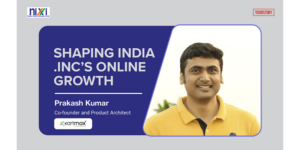Wearable Birth Control
The growing popularity of wearable healthcare products, including birth control, is an emerging transformation towards telehealth. Wearables are wireless communication devices that constantly monitor a patient’s biological data and deliver it to the user or even medical professionals in real-time.
As per a recent P&S Intelligence report, the wearable technology market would surpass 65 billion USD by 2030 (1). The rising trend in wearables will advance the technology, and as we progress, wearables will continue to be less intrusive and smaller.

Natural Cycles (2) is the first FDA-approved birth control application. It offers women a hormone-free option which is about 93% effective at preventing pregnancy by pairing with wearables such as Oura Ring to track biometrics and predict ovulation cycles. It is almost on par with the contraceptive pill.
While Natural Cycles may be the first, they are most likely won’t be the last.
Several women are looking for alternatives to hormone-based methods such as the pill. As per the UN’s data in 2019 about the use of contraceptives (3), more than 190 million women globally have an unmet requirement for birth control.
The data also suggests that about 80 million women use less reliable conventional methods such as the rhythm or withdrawal method, indicating plenty of room for new entrants in this industry.

A review of 3-start ratings in the app store indicates that several women use two or more fertility-tracking applications in tandem. Most common requests from Natural Cycles users include:
- Improved UX: Users often check the application early in the morning, when their basal temperature is the most accurate and if it was easier to use while half asleep.
- App for Husband/Partner: “I am disappointed that Natural Cycles has completely left my partner out of the mix,” said one user, noting that “in a committed relationship, fertility and reproduction is a two-person responsibility.”
As the industry expands, there could be an opportunity to create and license better algorithms to predict ovulation accurately. Things such as alcohol can still change critical biometrics such as basal temperature enough to look like ovulation.
As Elina Berglund, the CEO of Natural Cycles, told the Fast Company, “the big goal is creating new wearables that can measure hormones directly in the blood. However, the technology is not yet here.”
Print Media
One of the silver linings of the COVID-19 pandemic was that it allowed printed book sales to come back. Over the past few months, Publishers Weekly reported (4):
- An increase of 8.2% total print sales in 2020 compared to 2019.
- In the initial six months of 2021, sales surged about 18.5% YoY from last year.
- Adult fiction has witnessed the most significant growth than any category, increasing 30.7%.
Graphic novels are skyrocketing in the adult fiction segment, with H1 sales this year growing 178% YoY to 16.2 million copies.
It represents more than 20% of all adult fiction sales, up from a mere 9.3% in 2020.
Even in India, there is a significant surge in searches for printed books (5). English-language books had the highest search interest volume, followed by Hindi, Telugu, Marathi, and Tamil. In terms of categories, Indians searched mostly for romance and thriller books in fiction genres. There was most Google search interest for biographies, business, autobiographies, and mythological books in the nonfiction genre. Another genre that emerged amid the pandemic and gained the most was self-help and mental health books.
The public interest in printed books indicates that we are currently living in a 2nd golden age for publishing, which opens up different opportunities for entrepreneurs.
BookTok Marketing
A 2018 book, They Both Die at the End from Adam Silvera, suddenly sold 331 copies early in 2021 after increased interest on #BookTok (6), a corner in TikTok dedicated to book lovers, where videos have racked up a cumulative 9.6 billion USD views.
Businesses can help solo authors and even full-on publishers with this medium.
What’s Old is New Again
Books from the last publishing golden age, including titles from Woolf, Hemingway, Fitzgerald, and others, are entering the public domain in 2021 (7).
Businesses can also capitalize by redesigning religious books like Bhagavad Gita and Mahabharata and repackage them for a new crowd. Millennial book lovers can also be interested in modern insights on classics from the likes of Virginia Woolf, Aldous Huxley, and Edith Wharton. Businesses can also monetize from the makeover of graphic novels.
Publish Your Own
Furthermore, it could be the right time if you have ever wanted to self-publish. Considering the popularity of e-books (8), it is heartening to see the success of print books and media.
Whether it is the increased feeling of connection a reader gets from it, the tactile pleasure of touching a physical book, or the enjoyment of turning a real page, print books have a vital role in helping people out of real life while lowering stress and anxiety levels. Perhaps, you can write a book about it.
The Growth of 3d-Party Marketplaces
According to Marketplace Pulse (9), Amazon is the most significant online retailer globally, generating over 380 billion USD in 2020, up from 280 billion USD in 2019 and 230 billion USD in 2018. Notably, about 50% of all sales on the Amazon marketplaces come from third-party sellers.

Since January 2017, more than 3.3 million sellers have joined Amazon marketplaces globally, almost 3,718 new sellers daily! The US, India, and UK make up over half of all new sellers. A breakdown of new sellers indicates that over a million joined the US marketplace, followed by India, with more than 400k new sellers, and the UK, with about 300k new sellers.
After rolling out in Singapore, Amazon now has 16 marketplaces around the globe, including Canada, Spain, Germany, Italy, France, Japan, Australia, Brazil, China, Mexico, Turkey, and UAE.
The majority of the most significant sellers joined Amazon several years ago. Even though there has been increased competition with the rapid adoption of private labels, they are still at the top.
Below are some interesting facts about Amazon Marketplace:
- More than 8.5 million sellers on Amazon have over 1.8 million active sellers on the platform. As per Marketpulse, there is a rise in the number of sellers by 17.7% a year, with approximately 343k new sellers.
- Since the coronavirus pandemic, there has been a huge surge in customer demand for essential products and household stables, including health, personal care, groceries, and home office supplies.
- In 2019, there has been a 39% increase in Amazon ad sales. As the ecommerce giant customizes features within Sponsored ads, more brands are experimenting with Amazon’s ad solutions (10).
- There has been a 250% increase in new sellers signing up in the Amazon India marketplace, bringing about 90k new products every day (10)!
Well-known ecommerce platforms in India are taking a page from Amazon’s playbook, ramping up their 3rd-party marketplaces to offer more options to their consumers.

Amazon is the most prominent marketplace in India, with more than 323 million monthly visits. The only other marketplace with a similar scale is Walmart-owned Flipkart, with 231 million monthly visits.
Next comes Snapdeal and Myntra, with over 51 and 44 million monthly visits. Snapdeal is a general category marketplace whereas, Myntra dominates in Fashion. Notably, Myntra has also started expanding its offering to other categories like beauty and cosmetics and home and living (12).
However, they are not alone, a home-grown platform, particularly new in the space; Reliance’s JioMart is also witnessing 3x growth since its inception in May 2020. It plans to onboard one crore sellers over the next three years and expand its categories and operations throughout the country (13).
“More product listings equals better placement in search results, bigger order value, and fewer stranded carts,” said Adrien Nussenbaum to The Wall Street Journal. Notably, Adrien is the founder of Mirakl, which assists retailers in adding marketplaces to their existing online portals (14).
Nonetheless, with more sellers joining new and emerging 3rd-party marketplaces, there are a lot of upcoming opportunities for businesses, including :
- Education for Sellers: With a lot of new sellers coming on board with ecommerce marketplaces, there is a need for training or coaching them to help them get started. Such a growing cohort of niche business owners would be perfect for the paid executive peer group, newsletter, or even a roll-up.
- Assisting Retailers: As more retailers add 3rd-party marketplace, they will need consultants to help them build the technology, seller community features, shipping infrastructure, customer support, and other playbooks to make these marketplaces work.
- Expanding Your E-commerce Channels: Additionally, if you are presently selling on Amazon, a new 3rd-party ecosystem can provide lower fees, less competition, and more visibility. However, as some sellers highlight, their tools, logistics support, and website traffic do not match Amazon yet.











